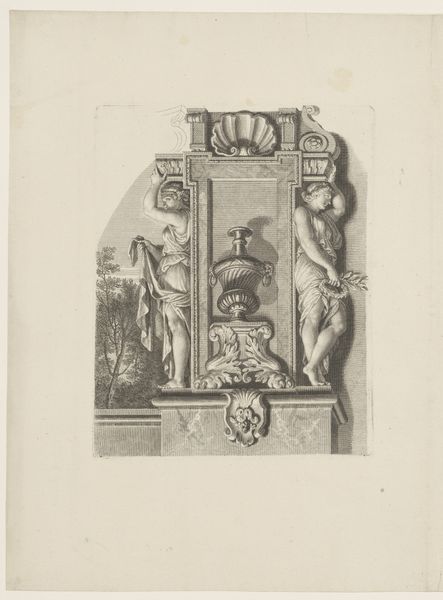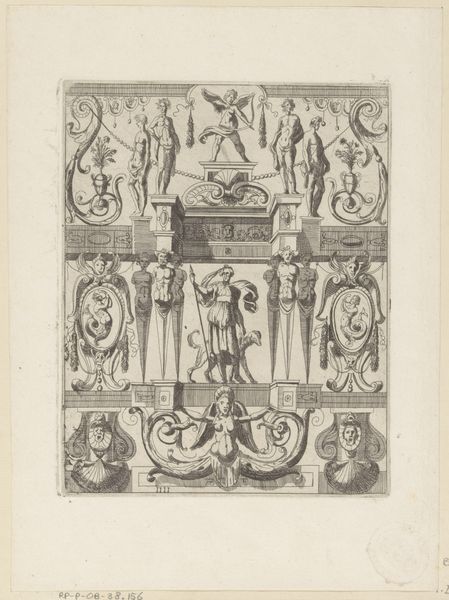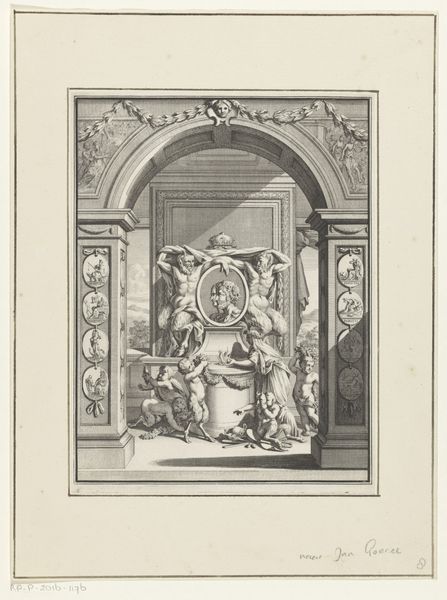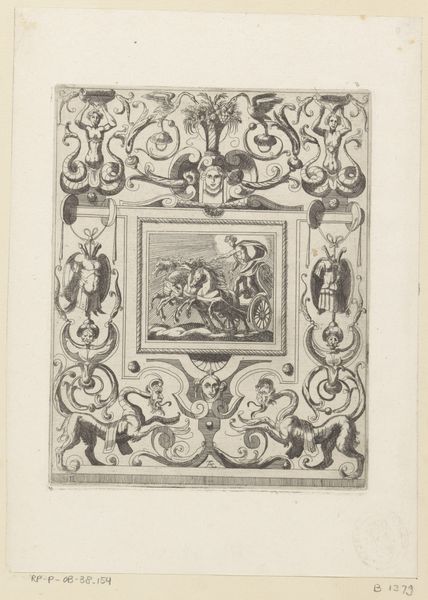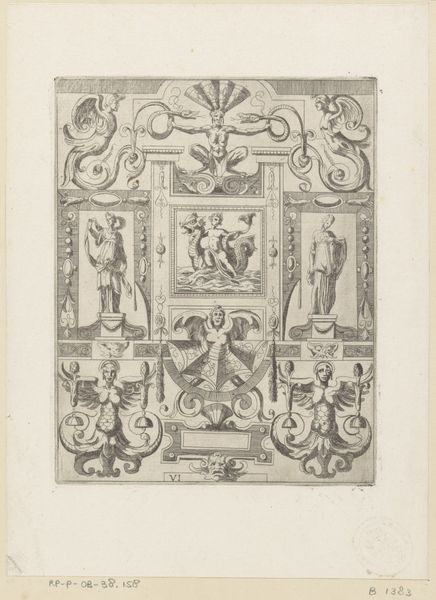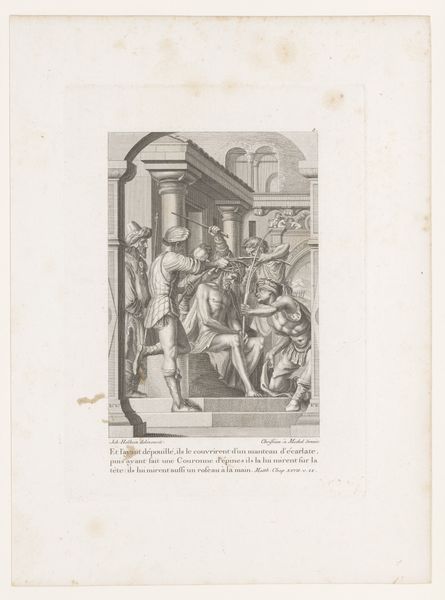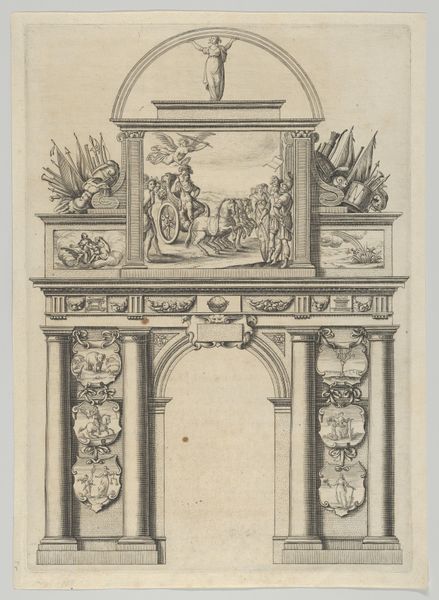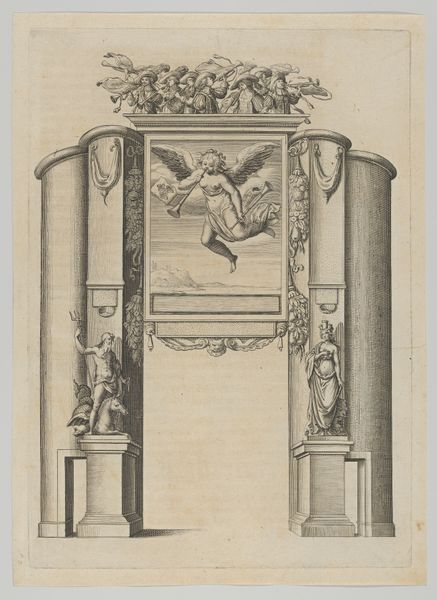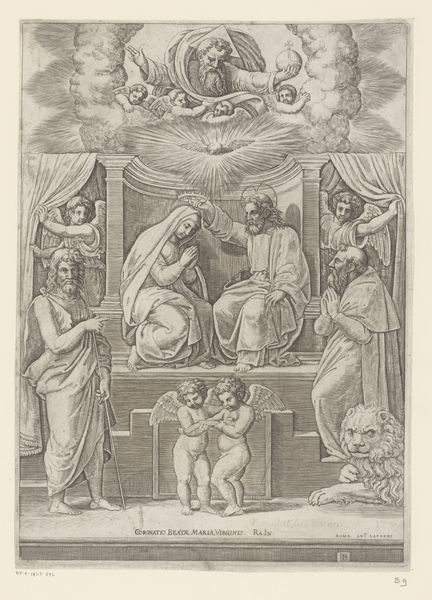
print, engraving
# print
#
figuration
#
11_renaissance
#
line
#
history-painting
#
italian-renaissance
#
engraving
Dimensions: width 361 mm, height 260 mm
Copyright: Rijks Museum: Open Domain
Curator: It has an ethereal quality; I find its starkness beautiful. The sharp lines create such a captivating scene. Editor: This engraving, titled "Maria gekroond door Christus," which translates to "Mary Crowned by Christ," dates back to around the 16th or 17th century. It's currently held in the Rijksmuseum. It’s believed to be by the hand of Meester van de Dobbelsteen. What catches your eye structurally? Curator: Well, first the line work, the density varies beautifully to indicate light and shadow. Note the careful rendering of textures: the soft clouds versus the defined figures, and how this supports the work's semiotic function. Editor: Absolutely, but consider too the function of this piece. It’s a print, likely meant for wide distribution. What does that suggest about the artist's, and subsequently the church's or patron's, goals? Were they focused on conveying religious narratives to a broader, perhaps less literate audience? Curator: No doubt! Dissemination and accessibility are key. And I love the cherubs peeking behind the curtains; they disrupt the formality, introducing an element of humanity. Editor: The cherubs remind me of Renaissance depictions of the divine intertwined with human characteristics. Did you also notice the figure with the lion? Its placement directs your eyes towards Mary and Christ, focusing on that power dynamic as she is crowned. Curator: That's precisely how Renaissance-era artists conveyed power and sacredness, constructing visual hierarchies within the composition to emphasize specific figures. Editor: It would also be interesting to consider how prints like these affected the landscape for artists at that time. It democratized art and art ownership by creating these more available and readily traded reproducible works. Curator: Precisely! Seeing the Italian Renaissance from this point of view shifts our appreciation; it brings to light artistic innovation across many fields and in the economic frameworks that made it possible. It shows art wasn’t always only for the wealthiest class. Editor: True, viewing art like this adds depth to our perspective. Curator: Yes, considering the print’s accessibility gives it more meaning than its sheer artistry.
Comments
No comments
Be the first to comment and join the conversation on the ultimate creative platform.
